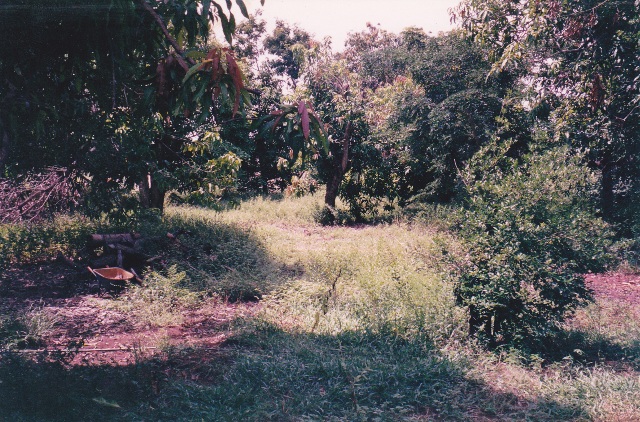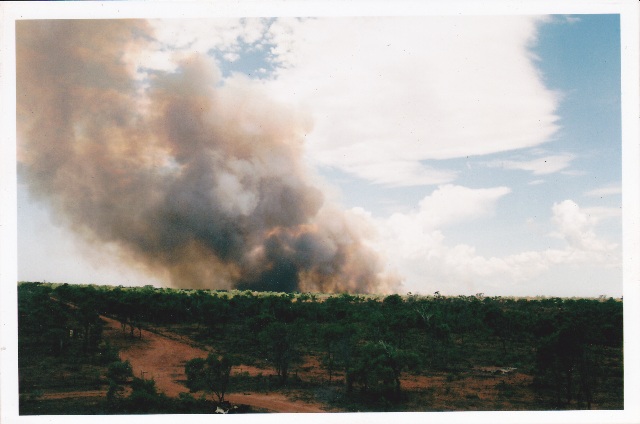The Big Boss!
Host: Country Downs Station
Written by Kurt Elezovich – Owner, Country Downs Station.
Today I am heading out to do some fencing (checking and fixing wires etc.) and to chainsaw the larger shrubs and the not-too-large trees that continuously annoy us by growing along all of our fence lines. As I will be out all day, it is time you all got to meet my husband, Kurt. He will be telling you his story, so grab a cuppa and read on for the Big Boss’s perspective! Ciao ciao, Nikki Elezovich.
How did I get roped into this? I have thought about it for a minute, and I guess it’s a strong storm, so better run with it!
I first came here in 1976 for a party with my parents, according to my mother who remembers everything that ever happened . . . ever! Dad took a crook prawn or something and we left early, Mum’s lasting memory was of a long handled shovel with a toilet roll shoved over the handle (you thought a thunderbox was primitive) considering that the owners of that time had been here for 12 years, so that was a fair indicator of the state of improvements at that time!
My next visit was in about 2000 when myself and a couple of mates came out to buy a killer, things hadn’t improved much at all, the caretakers at the time were a fairly dodgy bunch who were selling killers for cash to anyone with 100 bucks, this was very cheap even then, and not sustainable if you actually own those cattle, I assure you. I enquired about the owner of the property and was told that it was some sort of tax dodge for a rich Queenslander, who “would never sell the place”. It sold privately at a very low price 11 months later, I kicked myself and forgot all about it until a chance conversation with a local residential property valuer 18 months later, who said “Country Downs is coming on the market, but it’s no good for cattle”, this being the prevailing wisdom at the time. I figured that, neither he nor the current owner knew anything about cattle, so decided to have a look myself. After a bit of a drive around and a look at the rainfall records (980mm Average annual), I figured that for the asking price, it would make a pretty good hobby farm if nothing else! (at 174,000ha at the time it was a pretty big hobby farm, but what else do you call a farm that doesn’t make money?) Three days later my offer was accepted and I was officially a pastoralist, look out Sid Kidman!
The first few years were pretty hard, trying to break the inertia and get things going as well as juggle a mining job at the same time, this problem was solved for me when the mine shut down and I got laid off! I worked on the property full-time about a year until I ran out of money and got another mining job to cover the bills. Slowly but surely over the next while, buying small lots of cattle and fencing, the property got to be too much to manage part time, so had to give up the mining (still miss the money) and go it for real, this is about the time that Nikki had basically the same thought, so here we are 6 years on, with a couple of kids and a fairly hefty debt, and a partly developed business.
It’s still a challenge everyday but I wouldn’t be anywhere else. I work pretty much every day on the property, but when you’ve been an underground miner in two of the hottest mines in Australia, any day above ground is a day off! As someone having been and done mining, I can recommend it to people who have a goal in mind, like paying off a housing loan or something, but I saw a lot of people earn a lot more money than me, and blow it on rubbish like ski boats, Motorbikes or the latest model HSV, DVD, SUV etc . . . The danger of this is that they end up with a big debt, but no asset, still mining in their 50’s and living with mum! This may sound exaggerated but these were real people. My theory is, that if I am going to wear myself out I would rather do it on my own terms than in a hole in the ground (for someone else), and maybe one day pass this on to our kids, if their keen enough to do it, and work hard enough!
The great thing about what we do in the Northern Beef Industry is that this is a solar industry, our livestock graze on natural pastures which would otherwise get burnt in the summer from lightning strikes, or any day at all by some careless (at best) hand with a match. This time of year, we are under constant threat from bushfires burning all our pastures with three months to go until they can grow back from rain, it’s no different from someone burning your hayshed down, it’s just out in the paddock! This has the effect of an instant drought as far as the livestock go, and we have been fortunate enough to never actually get completely burnt out in which case there is no feed at all for the cattle and you have to buy it in (it’s been very close to it on occasion). This is financial, and ecological disaster at the same time, and it takes about three to four years to get the pastures back right after an out of season burn.
Having said that, however, the use of fire as a land management tool is critical for us (at the right time). We do early dry season preventative burning off to stop getting burnt out later (theoretically, anyway). This involves “cool” small fires that go out themselves when the grass is still a bit green, creating a physical barrier to stop fire spread later. We also burn rank pastures late in the year after the first storms to remove dry grass and woody weeds that otherwise grow up and out-compete the grasses. These types of fires are what help to create and maintain the tropical savannas that we depend upon.
Yesterday there was a plume of smoke go up at our front gate at 2pm, gusting winds, 36 degrees, three months to the next rain, not good at all. Feeling like I had found a tumour, I charge down with the grader, and find that it was over the other side of the road on crown land, not in our paddock. Still a concern, but more like a boil than a tumour! It may seem funny but these fires burn unnoticed all the time and get pretty much ignored (almost impossible to stop anyway). So back to the job at hand with one eye on the smoke, (yep, still there . . . ) if it “jumps” the road, all bets are off, and I will have a new priority.
It’s hard to plan much with this sort of loose cannon around, it drives Nikki mad when I say that by the time I have written down a plan, it’s out of date, but it’s pretty close to the truth (Nikki is very organised). We have a large whiteboard that things get written on, and crossed off, ideas, messages, jobs to do, parts to order, etc . . . this allows us to juggle priorities without too much disruption.
The main secret to success in the farming industry (in my opinion) is that you just never take no for an answer, just make it happen, come hell or high water, so regardless of what else is going on, once something becomes a priority we sort it out no matter what. To someone outside looking in this may seem like macho bullshit, but those people that have run their own farming businesses are nodding wisely at this time. I don’t know if these are the sort of things that people want to know about, but it’s my go and this is what you get. If I come across a bit stubborn and biased that’s because it’s true, and I do have the scars to prove it!
I hope this has given some insight to the rare type of madness it takes to choose this life, it isn’t for everyone, and it certainly has its drawbacks, but I just wouldn’t be anywhere else for anything in the world. I just hope to be able to pass on my love of this country to my kids (and wife) and thank my parents for making me love this way of life!
Got to go and check the fire . . . and typing finger getting sore . . . Hasta la vista . . . baby!
Regards Kurt
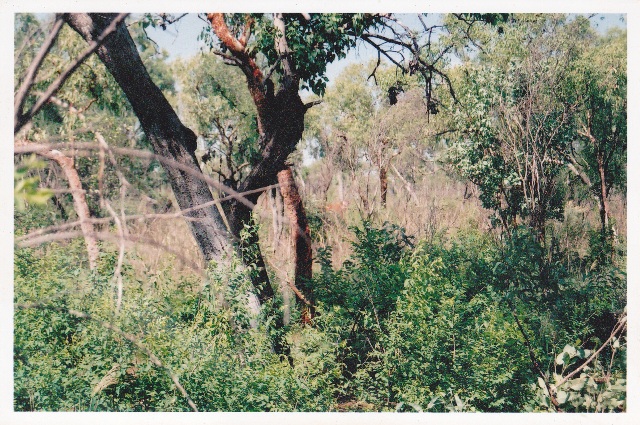 Inspection day 2003. If you look hard there are two cows. They were very wary of being shot, understandably.
Inspection day 2003. If you look hard there are two cows. They were very wary of being shot, understandably.
 Same day 2003 general mess, snake haven, and abused machinery (we got two days work out of the dozer before the engine threw it in).
Same day 2003 general mess, snake haven, and abused machinery (we got two days work out of the dozer before the engine threw it in).
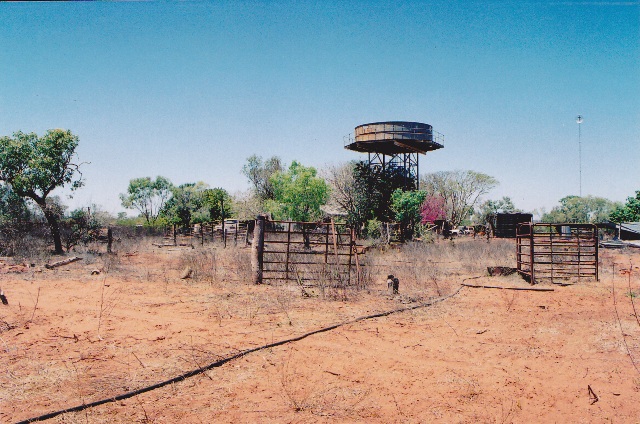 There were some old wooden cattle yards but they were cut up for firewood(the gates were still standing)The water tank was rotted out, but the stand was repairable (to give perspective that tank holds 100 tonnes of water) .
There were some old wooden cattle yards but they were cut up for firewood(the gates were still standing)The water tank was rotted out, but the stand was repairable (to give perspective that tank holds 100 tonnes of water) .
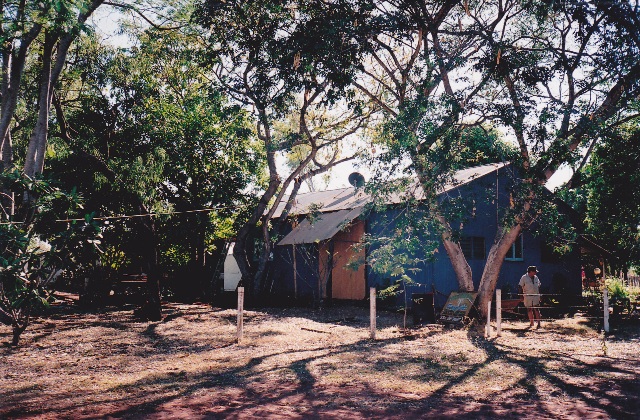 We were pulling down a big tree that was leaning on the “house”.
We were pulling down a big tree that was leaning on the “house”.
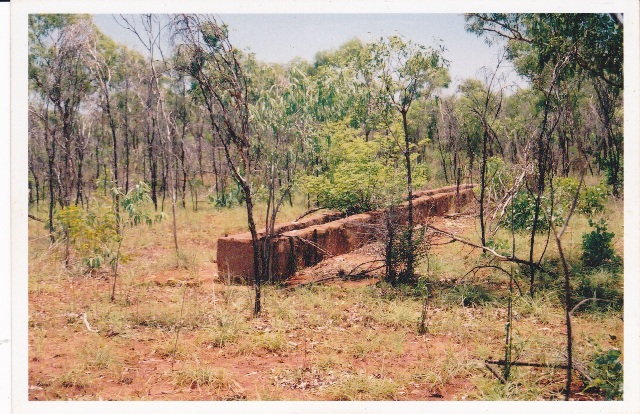 Cattle trough at Number Four bore which was collapsed, now makes a good lick trough.
Cattle trough at Number Four bore which was collapsed, now makes a good lick trough.
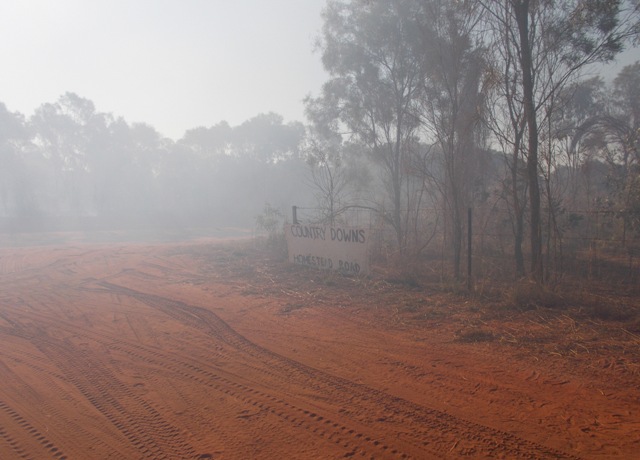 Not fog, but smoke at the front gate.
Not fog, but smoke at the front gate.

